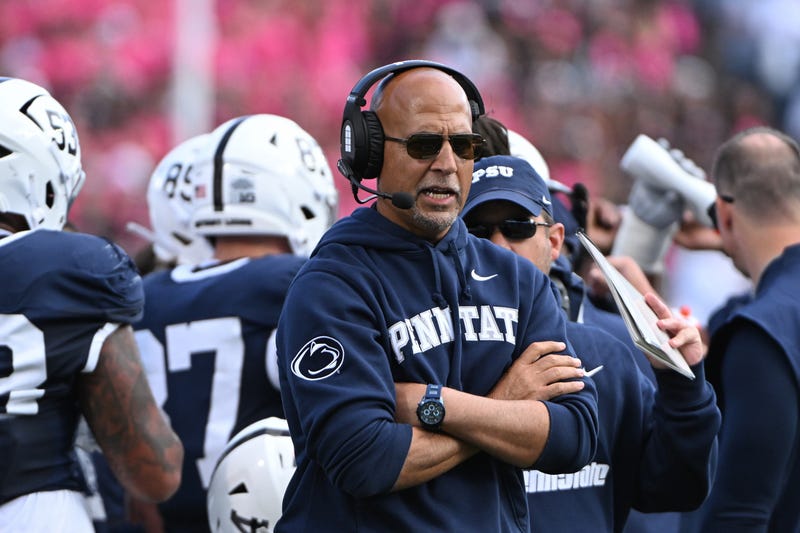
Merely three weeks into the season, UCLA’s DeShaun Foster and Virginia Tech’s Brent Pry were out of a job. Seven weeks later, a half-dozen more coaches were added to the list of midseason firings – and high-profile ones at that.
A quarter of the SEC’s coaches who started the season are gone. So are longtime coaches James Franklin of Penn State and Oklahoma State's Mike Gundy.
It's not as simple as an uncomfortable conversation and launching a search for the new coach. Universities are on the hook for millions of dollars for coaches they're no longer employing.
By Week 10, buyout totals for assistant and head coaches have climbed to approximately $185 million, a figure that raises the question of whether athletic departments spending their way out of a headache is still a feasible route to take, especially when higher education funding is under increasing pressure and schools are already sending athletes millions in revenue for the first time.
“It’s not a sustainable pattern,” said Prof. Michael LeRoy, a labor and employment relations expert at Illinois. “Even without revenue sharing, it would be challenging. These figures have been growing exponentially over the past five to 10 years. Power conference coaching contracts are in this escalating spiral that involves larger buyouts, longer terms and more restrictions on terminating contracts.”
While costs build, so do expectations. Making the 12-team College Football Playoff is considered the minimum seasonal goal for some programs. And leverage largely remains in the hands of highly sought-after coaches, the same ones who will inevitably be in talks for some of the top positions in college football at LSU, Florida and Penn State.
So how does the cycle of firing, rehiring and spending stop? It probably doesn’t, according to LeRoy.
“I don’t think schools have the willpower,” he said. “They’re always going to be concerned about what their rivals are doing, and there’s always going to be a rival that will break the bank to hire the best coach.”
LeRoy’s answer is in line with Texas coach Steve Sarkisian’s philosophy. His annual salary this year is $10.8 million and his current buyout cost exceeds $60 million. The fifth-year coach says it’s just the cost of doing business.
“Sometimes you’ve got to pay the guy that’s leading the ship,” Sarkisian said Monday. “That’s the price you pay. If you hired a coach and don’t think he’s the right coach for you, that’s part of it. You got to pay him. That’s just the way it works. ... So if you’re not willing to pay a coach and what his contract is, well, you’re probably not going to get the coaches you thought you might get.”
Sarkisian added that coaches are asked to a lot, a sentiment echoed by others.
“Yeah, I think that unlike in the NFL where there’s a lot of different people doing a lot of different jobs, in college football, you’re still really as the head coach overseeing personnel, overseeing the marketing of your program, overseeing the player acquisition, overseeing recruiting, overseeing scheme, overseeing coaches, player development," said Washington's Jedd Fisch.
Top programs with seemingly endless resources may be able to keep up in this landscape — LSU says Brian Kelly's buyout will be covered without using university money — but even those who can might take a different approach with so many massive buyouts piling up, said Mit Winter, a college athletics attorney at Kennyhertz Perry.
“Some schools, even if they might have a donor base that could cover these buyouts, they might take the opportunity with all the changes in college athletics now to say, ‘Alright, we’re not going to agree to contracts that are 10 years with guaranteed compensation that would put us on the hook for a huge buyout,'" Winter said, suggesting the potential for shorter contracts, fewer guarantees and more incentives with extensions based on performance.
The changes Winter refers to centers on the evolving economics in college athletics, and it's rewriting the job description for a modern coach. The criteria for success isn't what it once was with revenue-sharing, NIL compensation and the transfer portal taking over.
“A coach who had been successful 10 or 15 years ago under a model of recruiting high schools across the country for five star players, that isn’t the same model as today," LeRoy said. “These hires are retrospective in nature, so you’re in effect hiring a coach who was successful under a different business model for coaching success, and therefore, when the coach doesn’t produce the way he had produced in the past, pressure builds really quickly to fire him.”
Ohio State coach Ryan Day has accepted the fluctuating landscape as part of the job.
“I stopped saying this is crazy. I just said, this is the job," he said. "And that’s exactly what it is, because every year it just changes so much, and you have to be willing to adapt.”
“It’s kind of like herding cats sometimes," Day added. "You can work all day and feel like you did nothing all day from early in the morning to late at night, and you feel like you got nothing done, but you actually did. And I think that’s the job of a football coach now.”
One way or another, the schools already searching for their next hire will all be taking a gamble.
“These coaching contracts are somewhat like buying a Powerball ticket in the millions of dollars in the hopes that you will cash in. Somebody does cash in, but a lot of people are out of a lot of money," LeRoy said.
___
AP sports writers Jim Vertuno, Andrew Destin and Joe Reedy contributed.
___
Get poll alerts and updates on the AP Top 25 throughout the season. Sign up here. AP college football: https://apnews.com/hub/ap-top-25-college-football-poll and https://apnews.com/hub/college-football